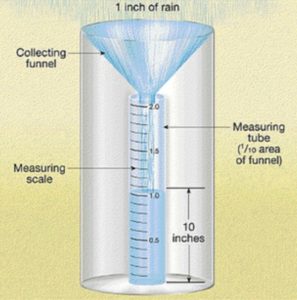Unveiling the Scientific Research Behind Rainfall Gauges: Just How These Tools Play an Important Duty in Environment Research and Ecological Monitoring
Rainfall determines, seemingly simple devices, hold a profound importance in the realm of climate study and ecological tracking. As we peel off back the layers of this clinical veil surrounding rain gauges, we discover a world where precision, data precision, and precise monitoring converge to unveil a deeper understanding of our altering climate and its influence on the planet.
Significance of Rainfall Gauges
Rain determines play a crucial function in monitoring and gauging precipitation degrees, giving essential data for environment research and analysis. These tools are essential in evaluating the amount of rains that takes place in a details area over a certain duration. By gathering and gauging rainwater, rainfall gauges offer important insights into the distribution and intensity of precipitation, aiding meteorologists, hydrologists, and climatologists in recognizing climate patterns and fads.
Additionally, long-term data collected from rainfall evaluates helps in examining environment modification effects and patterns, adding considerably to scientific research study and decision-making processes. In significance, rainfall evaluates serve as necessary devices in the area of meteorology and environmental science, playing an important function in advancing our understanding of weather condition and climate characteristics.
Kinds Of Rain Scales

Functionality and Procedure
In the realm of climate research study and meteorological studies, the performance of rain evaluates lies in their intricate functionality and specific operational devices. Rainfall gauges are created to accurately gauge the quantity of rainfall that tips over a particular location during a collection period. These tools typically contain a channel that gathers rainwater and networks it into a determining tube. The measuring tube is marked with calibrated measurements that permit for the accurate metrology of rainfall.
The capability of rainfall assesses is based on the concept of determining and gathering rainwater in a standardized manner. This collected information is vital for recognizing neighborhood weather condition patterns, tracking long-term climate fads, and evaluating ecological effects. To make certain precise dimensions, rain evaluates demand to be tactically placed in open locations away from blockages such as structures or trees that could disrupt the collection procedure.
The operational aspect of rainfall assesses involves normal maintenance to stop debris buildup, calibration checks to preserve measurement accuracy, and information tape-recording for evaluation (rain gauge). In general, the performance and procedure of rainfall assesses are necessary for collecting reliable precipitation information important to climate study and environmental tracking
Duty in Environment Study
Offered the important value of accurate precipitation dimensions in recognizing climate patterns and ecological impacts, the function of rainfall gauges in climate research is crucial. Rain assesses give vital information for climate study by measuring the quantity of precipitation that falls over a specific location go to this web-site throughout an offered duration. This information is essential for keeping an eye on long-term trends in precipitation patterns, evaluating the effect of climate modification on rains circulation, and boosting environment models.

Environment scientists utilize information accumulated from rain assesses to assess variants in precipitation levels, identify local climate trends, and review the effectiveness of water source monitoring strategies. By contrasting historic rainfall data with current measurements, researchers can detect changes in rainfall patterns, such my site as modifications in the frequency or strength of rainfall events. This information is essential for understanding exactly how climate change is influencing precipitation dynamics and can aid policymakers make informed choices concerning adjustment and mitigation techniques.
Applications in Ecological Monitoring

In flooding projecting, rain scale data assists to track rainfall intensity and distribution, permitting authorities to release timely warnings and take required measures to alleviate flooding threats (rain gauge). Drought surveillance counts on rain gauge data to examine dampness degrees in the dirt and track rainfall shortages, helping in the recognition of drought-prone locations and the application of drought response approaches
In addition, rain scale data plays an essential function in water resource administration by giving details on water availability and use trends. Furthermore, in farming, rainfall scale information assists farmers in maximizing watering routines, plant choice, and overall ranch monitoring practices based on local precipitation patterns.
Verdict
To conclude, rainfall evaluates are vital devices for gauging rainfall, providing beneficial information for climate research study and ecological surveillance. With various types and capabilities, rain gauges play an important role in comprehending precipitation patterns and their impact on the atmosphere. By accurately gauging rains, these gadgets add to the development of clinical knowledge and help in making informed choices associated to water resource monitoring and calamity preparedness.
Rain determines play a vital duty in surveillance and measuring rainfall levels, supplying crucial information for climate research and evaluation. The basic rain scale, known as the "tipping pail" scale, is Web Site one of the most commonly used devices. Ultrasonic rain assesses usage noise waves to discover the presence of rain, providing real-time data on rainfall degrees.Environment scientists use data accumulated from rainfall evaluates to examine variants in precipitation levels, identify local climate patterns, and examine the effectiveness of water resource management techniques.In verdict, rain determines are necessary devices for determining rainfall, supplying valuable information for climate study and ecological tracking.
Comments on “Cutting-edge Designs in Rain Gauges: What Makes Them Attract attention”